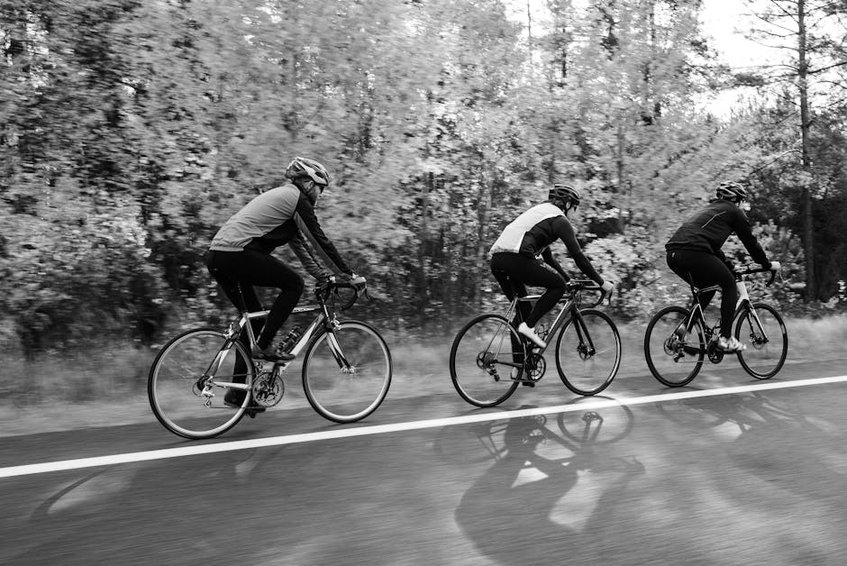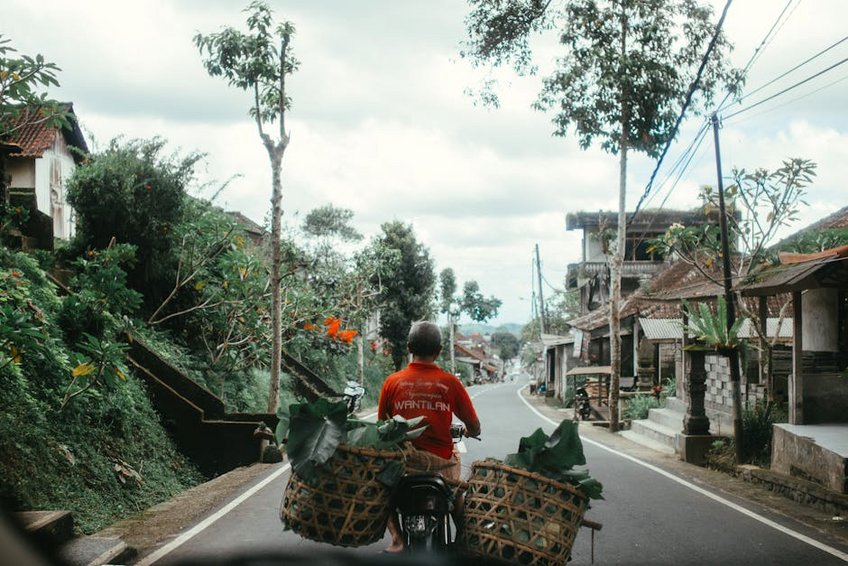Village Cycling Tours: An Authentic Journey Through Rural Landscapes
Imagine pedaling along quiet country lanes, the scent of fresh earth and blooming wildflowers filling the air, with only the sound of birdsong and your bicycle tires humming on the pavement. Village cycling tours offer this exact escape—a chance to trade bustling city streets for the serene pace of rural life. This isn’t just exercise; it’s immersion. You’ll discover hidden hamlets, connect with local cultures, and experience destinations in a way that simply isn’t possible from behind a car window or on a crowded tour bus. A well-planned village cycling tour provides a unique blend of light adventure, cultural discovery, and peaceful relaxation, making it perfect for travelers seeking an authentic and active holiday. Whether you’re a casual rider or a seasoned cyclist, these journeys unlock the heart of a region, one pedal stroke at a time, offering a deeply personal and rewarding travel experience you’ll cherish for years to come.
Village Cycling Tours Essential Information – Getting Started
Before you set off on your two-wheeled adventure, understanding the core components of a village cycling tour is crucial. These tours are designed to be accessible, focusing on enjoyment and discovery rather than extreme athletic challenge. Most operators cater to a range of fitness levels, offering e-bike options to flatten any daunting hills and ensure everyone can keep up. The typical daily distance ranges from a very manageable 15-25 miles (25-40 km), leaving plenty of time for photos, coffee breaks, wine tastings, or exploring a charming village square. Your luggage is usually transported for you from one accommodation to the next, meaning you only need to carry a daypack with essentials like water, a camera, and a rain jacket. This hassle-free approach allows you to fully focus on the scenery and the experience itself.
What is a Village Cycling Tour? – What You Need to Know
- It’s a guided or self-guided multi-day trip through rural areas and small villages, using a bicycle as the primary mode of transport.
- The focus is on cultural immersion, scenic beauty, and local cuisine, not on speed or distance records.
- Routes are carefully planned to use quiet backroads, dedicated bike paths, and low-traffic lanes for maximum safety and enjoyment.
- Budget-Friendly (Self-Guided): $800-$1,200 per person for a week. This covers accommodation, luggage transfer, maps, and basic support. You pay for meals separately.
- Mid-Range (Guided): $2,500-$3,500 per person for a week. This typically includes accommodations, most meals, a guide, support van, and bike rental.
- Luxury (Premium Guided): $4,000+ per person for a week. Includes high-end accommodations (e.g., castles, wine estates), all gourmet meals, wine tastings, expert guides, and top-tier equipment.
- EuroVelo European Cycling Network
- Adventure Cycling Association
Who Are These Tours For? – Key Details
Village cycling tours are remarkably inclusive. They are perfect for couples seeking a romantic getaway, friends looking for an active holiday, and even families with older children. The pace is leisurely, and the support system (like luggage transfer and van support on guided tours) makes it feasible for almost anyone who can comfortably ride a bike for a few hours. If you can cycle around your local park for a couple of hours, you can handle one of these tours. Many companies also offer electric bike (e-bike) rentals, which provide a pedal-assisted boost, making uphill sections effortless and extending the range of who can enjoy this type of vacation.

Village Cycling Tours Planning Your Trip – A Step-by-Step Guide
Planning is key to a seamless and enjoyable village cycling tour experience. The first decision you’ll face is choosing between a guided tour and a self-guided adventure. Guided tours provide a leader who knows the route, handles logistics, shares local knowledge, and offers mechanical support. This is a fantastic option for first-timers or those who prefer complete peace of mind. Self-guided tours offer more freedom and flexibility. You’re provided with detailed maps, a GPS device, or a route app, and your luggage is still transported, but you set your own pace each day. Both options include pre-booked accommodations, often in charming family-run inns or boutique hotels that you might not find on your own.
Best Time to Go on Village Cycling Tours
The ideal time for a village cycling tour heavily depends on your chosen destination. Generally, the sweet spot is during the spring (April-June) and autumn (September-October) months. During these seasons, you’ll avoid the intense heat of summer and the largest crowds, while still enjoying pleasant, mild weather perfect for outdoor activity. Fields are often green and blooming in spring, while autumn offers stunning fall foliage in many regions. Summer can be wonderful in cooler climates like Scandinavia or the UK, but can be very hot in Mediterranean countries. Always check the regional climate patterns before booking.
Budget Planning and Costs for Your Cycling Holiday
Essential Preparation Checklist
Proper preparation ensures you spend your tour enjoying the ride, not dealing with avoidable issues. First, break in your cycling shoes if you’re bringing your own. Break in your saddle, too, by doing several training rides at home. Pack versatile, moisture-wicking clothing that can be layered. Essential items include a high-quality waterproof jacket, padded cycling shorts, sunscreen, and a solid pair of sunglasses. Don’t forget your passport, insurance documents, and a credit card. While most tours provide basic repair kits and tools, it’s wise to know how to fix a flat tire. Finally, do some light cycling in the weeks leading up to your trip to get your muscles accustomed to the activity.
Village Cycling Tours Top Destinations and Routes
The world is full of incredible regions perfect for exploring by bike. Europe, with its extensive network of quiet roads and well-signed cycle paths, is arguably the king of village cycling tours. The Loire Valley in France, a UNESCO World Heritage site, is famously flat and dotted with breathtaking chateaux and vineyards. Tuscany in Italy offers rolling hills through postcard-perfect landscapes of cypress trees and medieval hilltop towns. For something different, the Danube Cycle Path is a largely flat route that passes through charming Austrian and German villages. Beyond Europe, destinations like Vietnam’s Mekong Delta or the California Wine Country offer unique cultural and scenic experiences on two wheels.
Must-See Highlights on European Tours
Certain routes are iconic for a reason. In Provence, France, cycling through fields of lavender (in bloom June-July) is an unforgettable sensory experience. Stopping in villages like Gordes or Roussillon feels like stepping into a painting. In Italy, a tour through the Chianti region allows for impromptu wine tastings at family-run vineyards and long lunches in rustic trattorias. The Cotswolds in England offer a quintessentially British experience with honey-colored stone villages, cozy pubs, and gentle green hills. Each region offers its own unique charm, history, and culinary delights, making the journey as rewarding as the destination.
Hidden Gems and Local Favorites
While the classic routes are popular for good reason, venturing slightly off the beaten path can lead to incredible discoveries. Instead of the busy Danube path, consider the Altmühltal Valley in Germany, which is equally beautiful but less crowded. In Portugal, the roads through the Alentejo region reveal cork oak forests, whitewashed villages, and some of the country’s best food. In Slovenia, the cycling routes around the Goriška Brda wine region offer stunning views of vineyards and Alps with minimal traffic. These lesser-known areas often provide a more intimate and authentic experience, where interactions with locals feel more genuine and the pace of life is even slower.
Village Cycling Tours Practical Travel Information
Handling the logistics smoothly will make your village cycling tour infinitely more enjoyable. Most major tour operators are based in Europe and cater to an international audience, making booking from the US or UK straightforward. They often provide detailed packing lists and pre-trip information packets. When it comes to payment, credit cards are widely accepted, but it’s always wise to carry some Euros (or local currency) for small purchases in villages where cards might not be an option. Travel insurance that includes medical coverage and activity protection for cycling is non-negotiable. Ensure your policy covers you for the specific countries you’ll be visiting and the activity level of your tour.
| Category | Options/Features | Price Range (USD) |
|---|---|---|
| Bike Rental | Hybrid Touring Bike, includes helmet, lock, repair kit | $150-$250 / week |
| E-Bike Upgrade | Pedal-assist electric bike for easier climbing | $250-$400 / week |
| Insurance | Travel insurance with cycling activity coverage | $100-$200 / person |
| Single Supplement | Private room accommodation fee | $300-$600 / week |


